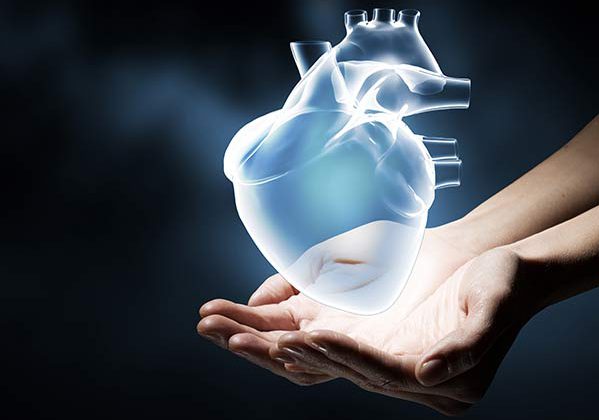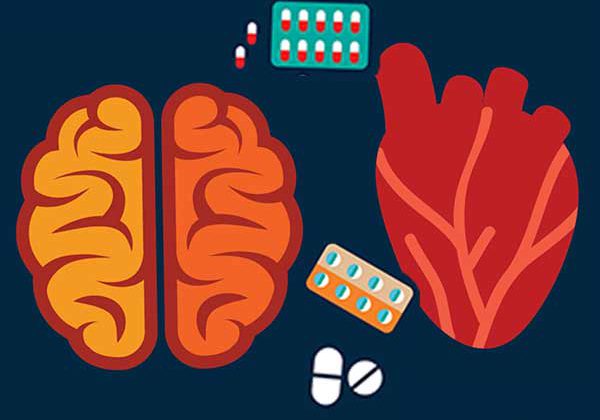Management of erectile dysfunction with a novel orodispersible formulation of the PDE-5 inhibitor vardenafil
Maria Cordina – A man with the problem of ED may feel robbed of his identity
Erectile dysfunction (ED) is a medical condition which can affect men of all ages. As men live longer and the prevalence of cardiovascular disease and diabetes continue to increase, the problem of ED will become more prominent. The condition affects men both physically and emotionally. The profound psychological effect that this condition has on men should not be underestimated. A man with the problem of ED may feel robbed of his identity, may develop feelings of dissatisfaction with life in addition to anxiety, depression, low self-esteem and a decrease in quality of life.1,2
While it is well know that the treatment for ED has come a long way from painful intracavernosal injection therapies to the widely available, effective, well tolerated phosphodiesterase type 5 (PDE-5) inhibitors, a large proportion of men still fail to seek treatment.3,4 In addition, the lack of adherence rate of men who have initiated therapy is high, with up to 80% choosing to discontinue therapy.5
Various reasons for failing to seek therapy have been proposed including lack of support, fear or denial of the issue, and the possibility that health care professionals do not feel sufficiently comfortable discussing the problem or patients themselves do not feel comfortable broaching the subject.6,7 In addition, it was found that younger men fail to seek therapy because they believe that their ED will resolve spontaneously, while older men accept it as a natural part of aging.8
Different studies have identified several reasons for discontinuation of therapy with PDE-5 inhibitors including ineffective treatment, side effects, partner reluctance, difficulties with general practitioner, embarrassment and financial issues. 9,10
While failure to seek therapy and discontinuation of therapy may be due to any one factor or a combination of factors listed above, data published in 2001 suggests that the needs of men with ED and their partners are still not being met by the available therapy.11 Eardley et al described the ideal ED drug as one which would be effective, safe, rapid, ‘on demand’, tolerance free, cheap, no effect on desire, discreet, spontaneous, long acting, unaffected by food drink and other drugs, accepted by partner and curative.12
While the available oral doses of PDE- 5 inhibitors incorporate many of the features stated above, none can be described as ‘ideal’. Furthermore, there appears to be the perception by a significant proportion of users that the therapy available is inconvenient.10
The availability of the new formulation of the PDE-5 inhibitor vardenafil, as an orally disintegrating tablet (ODT) formulation offers the possibility of increasing convenience, offering a greater degree of discretion, reducing the degree of embarrassment, thereby enhancing patients’ adherence to therapy.
Vardenafil OTD can be taken anywhere as it dissolves in the mouth within seconds without the need for water leaving a pleasant minty taste in the mouth.
As an ODT formulation, vardenafil, disintegrates in the mouth by the action of saliva. It is mainly absorbed across the GIT with about 8% being absorbed through the mucus membranes in the mouth, bypassing first pass metabolism thereby providing an improved bioavailability over the film coated formulation. However, the minor differences in pharmacokinetics between the film-coated preparation and the OTD do not have any clinically meaningful effect on onset of action, duration of action and safety.13, 14
The safety and efficacy of the new vardenafil formulation has been studied significantly in two phase III clinical studies – the POTENT studies. The key findings demonstrate that the 10mg ODT formulation is:
• equally effective in patient over 65 years of age as those under 65 years of age;
• effective regardless of underlying conditions or co-morbidities of diabetes, dislipidaemia and hypertension;
• effective regardless of severity of ED.
Overall the new formulation of vardenafil 10mg has a safety and efficacy profile similar to the film-coated formulation. 13, 14
Clinical studies have indicated that OTD formulations are very well accepted by patients and this has led to an improvement in adherence to therapy.15 In fact a recent study found that acceptance of a PDE-5 inhibitor formulation by patients was high, in which case this could lead to improved adherence to therapy.10
This new formulation offers a significant advantage over the film coated formulations in terms of discretion and convenience. It fits much easier into the patient’s life style and is removed from the traditional way of ‘taking medicine’ possibly enabling the individual to feel less like a ‘patient’.
Health care professionals should be proactive in seeking to increase awareness regarding availability of therapy for men with ED. They should be comfortable discussing issues related to sexual health and provide an atmosphere of openness which encourages the individual to discuss his problem. Clinicians would be able to make the proper assessment whilst allowing the individual to address any concerns about his condition and the therapies available. Once the communication channels are open, they could also encourage the involvement of partners which, in most cases, is extremely beneficial in obtaining a successful outcome. Since ED may be an indicator of other conditions such as occult coronary artery disease, cardiovascular disease, depression and diabetes, they may take the opportunity to make other health interventions.16,17
It is of paramount importance that clinicians are receptive to their individual patient’s needs and priorities, and selection of the appropriate therapy made accordingly.
References
1. Dunsmuir WD. History of erectile dysfunction. In C. Carson, R. Kirby, I. Goldstein (EDs). Textbook of erectile dysfunction (pp3-12). Ox
2. Jack L. A candid conversation about men, sexual health and diabetes. The Diabetes Educator 2005; 31(6):810-7.
3. Chew KK, Earle CM, Stuckey G et al. Erectile dysfunction in general medicine practice: prevalence and clinical correlates. Int J Impot Res 2000; 12:41-5.
4. Meuleman EJ, Donkers LH, Robertson C et al. Erectile dysfunction: prevalence and effect on quality of life: Boxmeer study. Ned Tijdschr Geneeskd 2001; 145:576-81.
5. Stimmel Gl, Guiterrez MA. Counselling patients about sexual issues. Pharmacotherapy 2006; 26:1608-15.
6. DiMeo PJ. Psychosocial and relationship issues in men with erectile dysfunction. Urologic Nursing 2006; 26(6):442-53.
7. Baldwin KC, Ginsberg PC, Harkaway RC. Underreporting or erectile dysfunction among men with unrelated urologic conditions. Journal of Urology 2000; 163;S4.
8. Shabsigh R, Perelman A, Laumann EO. Drivers and barriers to seeking treatment for erectile dysfunction: a comparison of six countries. BJU International 2004; 94:1055-65.
9. Hackett GI, Milledge D. A 12 month follow of 260 patients taking sildenafil. NHS clinical experience In: fourth congress of European society for sexual and impotence research Rome, 30 september- 3rd October (poster 171). 2001
10. Pereleman M, Edwards D. Perceptions of erectile dysfunction therapy and acceptance of an orodispesible phosphodiesterase type 5 inhibitor drug formulation among patients and physicians. Journal of men’s health 2010; 7(3):327.
11. Hatzichristou DG. Sildenafil failures may be due to inadequate instructions and follow up. Int J Impot 2001; Res 13:S32 (abstract 85).
12. Erdley I, Sethia K, Dean J. Erectile Dysfunction: assessment and management in primary care. London: Mosby wolf Publications. 1998.
13. Sperling H, Debruyne F, Boermans A et al. The POTENT I Randomised trial: Efficacy and safey of an ordodispersible verdanafil formulation for the treatment of erectile dysfunction. J Sex Med 2010; 7:1497-507.
14. Gittelman M, McMahon J, Rodriguez-Riveria A et al. The POTENT II Randomised trial: Efficacy and safey of an ordodispersible verdanafil formulation for the treatment of erectile dysfunction. Int J Pract 2010; 64:594-603.
15. Fu Y, Yang S, Jeong SH, Kimura S et al. Orally fast disintegrating tablets: developments, technologies, taste-masking and clinical studies. Crit Rev Ther Drug Carrier Syst 2004; 21 (6):433-76.
16. O’Kane PD, Jackson G. Erectile dysfunction: Is there silent obstructive coronary artery disease? Int J Clin Pract 2001; 55:219-220.
17. Goldstein I. The mutually reinforcing triad of depressive symptoms, cardiovascular disease and erectile dysfunction. Am J Cardiol 2000; 86:41F-45F.




